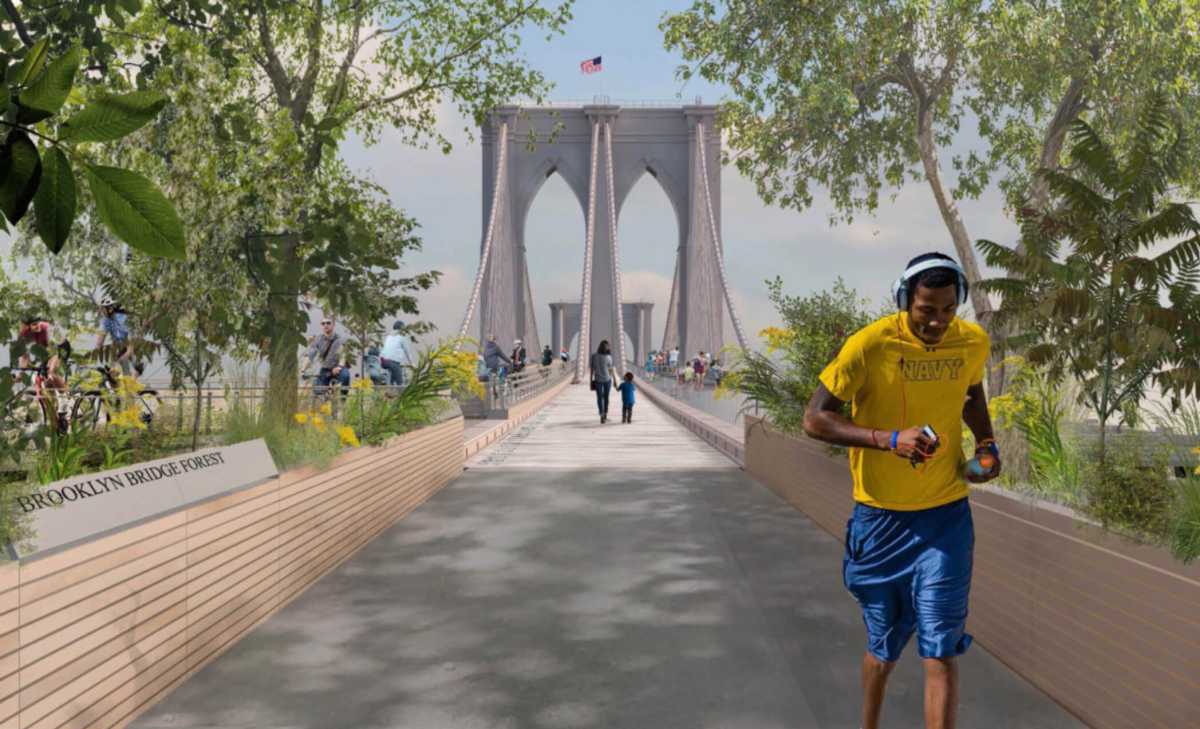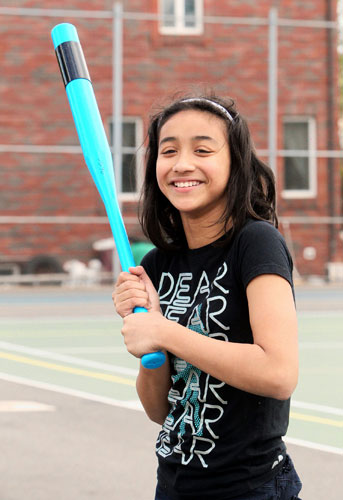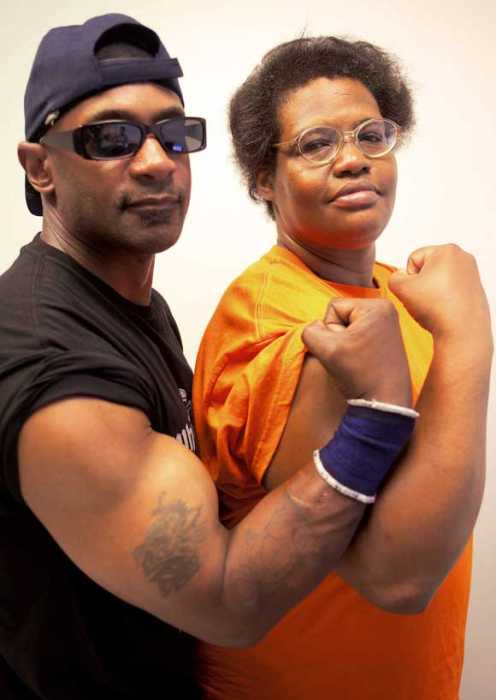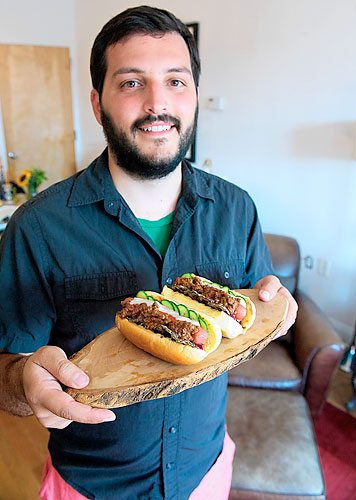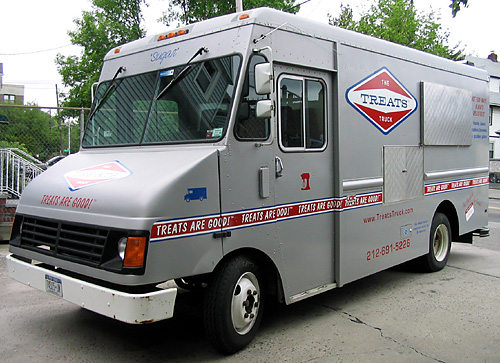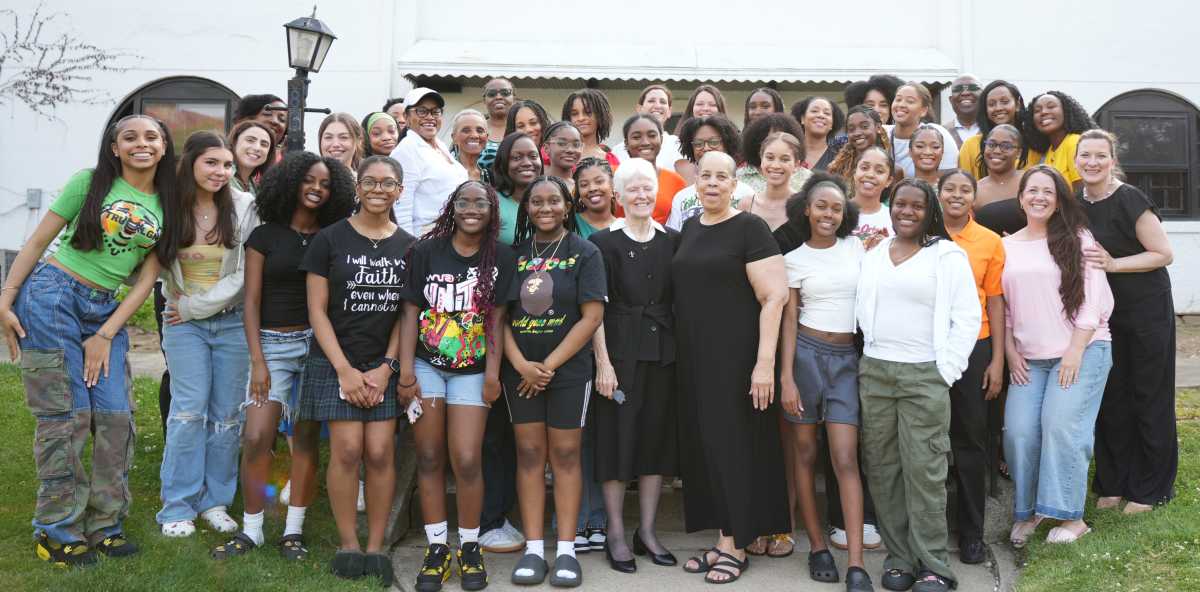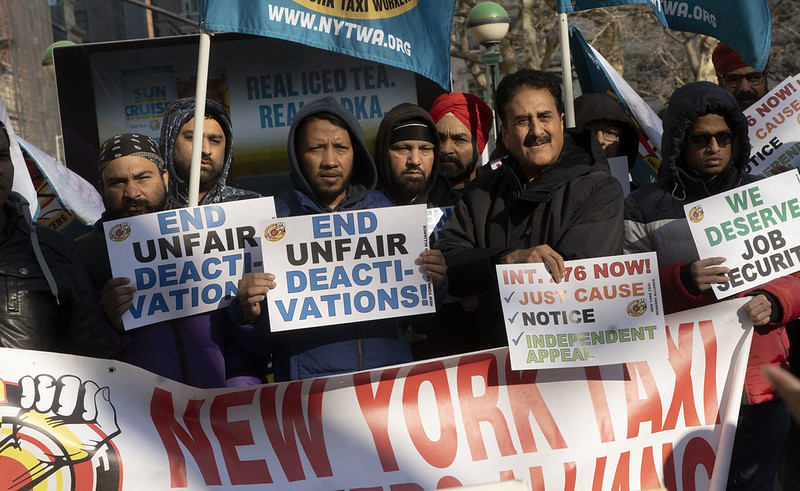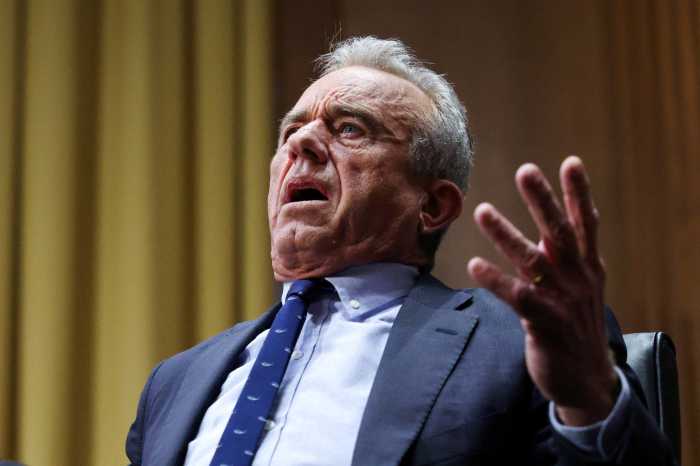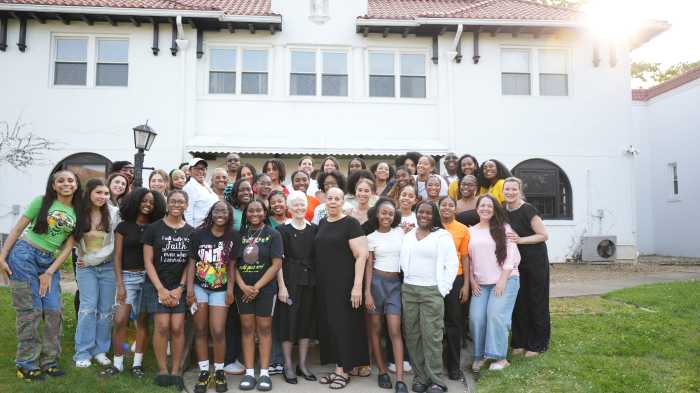The City Council and their architectural design partners announced the winners of the Brooklyn Bridge redesign competition on Monday — crowing two non-binding proposals to make the borough’s namesake span more friendly to pedestrians and bicyclists.
The winners of the “Reimagining Brooklyn Bridge” contest, which was organized by Council Speaker Corey Johnson’s office with partner firm Van Alen Institute, include the greenery-graced “Brooklyn Bridge Forest” scheme by Manhattan group Pilot Projects Design Collective in the category meant for professional builders.
For young amateurs, the glass-paneled “Do Look Down” design by up-and-comers Shannon Hui, Kwans Kim, and Yujin Kim won the Young Adult category.
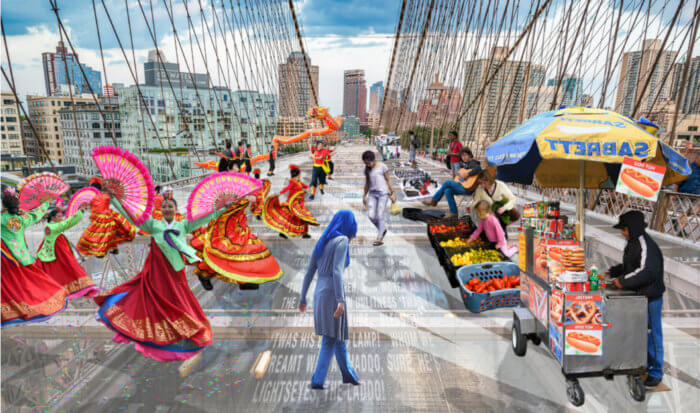
Both proposals came out on top due to their emphasis on repurposing public space while highlighting environmental sustainability and social equity — all of which have become more important amid the pandemic, according to the organizers.
“As made even more clear by the COVID-19 pandemic, public spaces and transportation options must be designed with equity, health, and sustainability at their core,” reads an Aug. 17 statement. “With this in mind, the competition’s winning designs reclaim the bridge’s roadways for expanded pedestrian and cyclist use.”
After votes by both the public and a jury of transportation, design, and business experts, the two winners each rose to the top of their categories — which were each composed of three finalists announced in July. Those finalists had been chosen from more than 200 submissions, spanning 37 countries since the competition launched in February, according to the organizers.
Pilot Projects Design Collective, a group of architects, conservationists, designers, and engineers led by Scott Francisco, will reap a $13,000 prize, while Hui, Kim, and Kim will receive $3,000 for their successful scheme.
Francisco’s proposal would expand the bridge’s wooden walkway, while reclaiming several car lanes down below for cycling. At either end of the span, the plans call for so-called “microforests” of biodiverse greenery, which the designer said will reconnect city residents with nature.
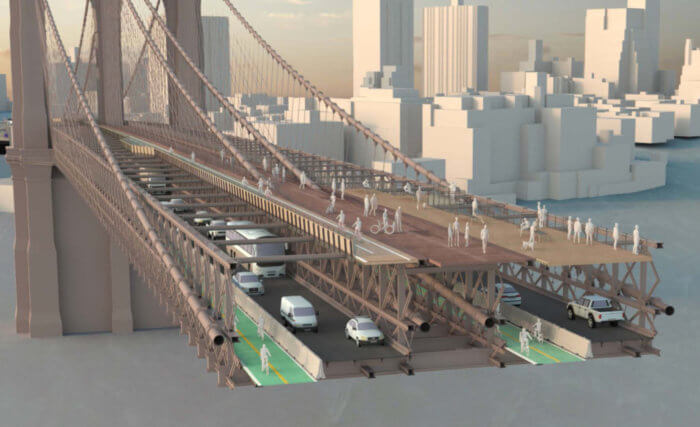
“Brooklyn Bridge Forest seeks to build a new vision of environmental sustainability and social equity — reimagining this beloved landmark as a way to connect New York City and its residents to forests and natural systems that sustain life for all,” Francisco said in a statement.
The proposal by the younger team would create a new glass deck above the roadway with sparkling lights and projections that would honor the city’s rich culture, while turning the roadway into a space for vendors.
“We are extremely grateful for the support and resources provided by the Van Alen Institute and the New York City Council to approach this project as an opportunity for us to imagine meaningful public spaces where people can feel seen and heard — and ultimately, belong,” said Shannon Hui in a statement.
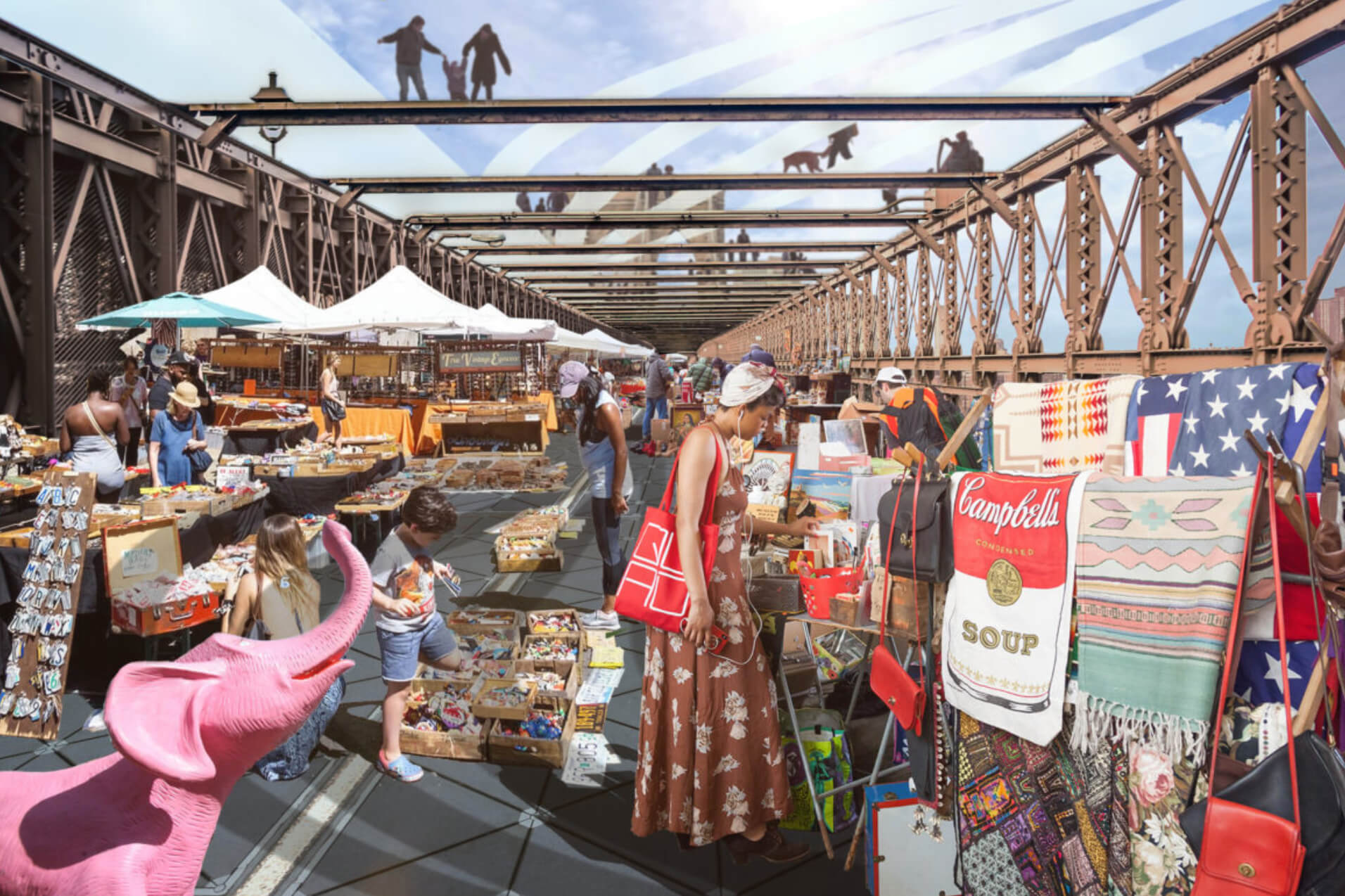
The aspirational proposals come after a rep from the city’s Department of Transportation accidentally revealed in June that the agency was in talks with Mayor Bill de Blasio to dedicate a car lane on the connector to bikes and walkers, prompting transit bigs to walk back that statement days later.
DOT Commissioner Polly Trottenberg said in the contest’s announcement the department always welcomes creative ideas to make the iconic bridge better for bikers and pedestrians.
“We are working to identify more space for pedestrians and cyclists and we always welcome new and innovative ideas to make this a reality, and thank the Council for their ongoing partnership,” Trottenberg said.
Speaker Johnson said he hopes the ideas will spur the agency into action on the Brooklyn Bridge and other crossings above the East River.
“They are a crucial first step to get New Yorkers thinking about how to adapt not only the bridge but also our streets and public spaces for future generations and stay true to our goal of creating an environmentally sensitive, bike friendly city that prioritizes pedestrians over cars,” Johnson said in a statement. “While we review these bold long-term visions for the Brooklyn Bridge, the DOT should act with urgency to implement changes on the Brooklyn Bridge and on other East River crossings to give more space to cyclists and pedestrians as soon as possible.”


